Cloud Concepts – AWS Cloud Practitioner
What is Cloud Computing
Cloud Computing–
- Make use of the internet
- Maintain data and application in remote servers to be accessed by users across the globe.
Hence, it uses the computer resources that are delivered as a service over the internet.
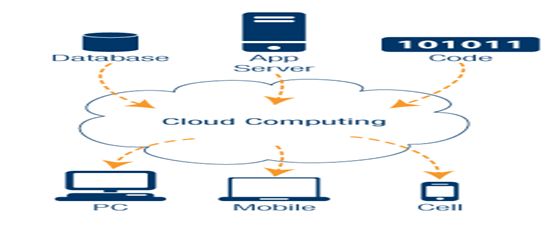
Figure 1: A basic structure of cloud computing
Evolution of cloud and types
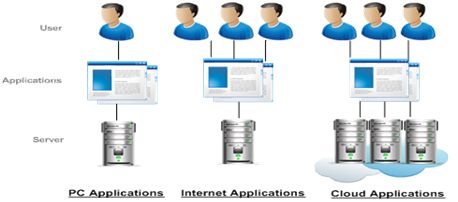
Figure 2: How cloud computing evolved
Stages of evolution of cloud computing
- PC Application Era – Since 1960s till the last of 20th century. Computing as utility developed with advancement as grid computing.
- No Cloud Era – Since end of 20th century. Internet is used to provide Application/Software as Service.
- Cloud Computation Era – The present era. “Cloud” refers to internet based access to computing, storage and data.
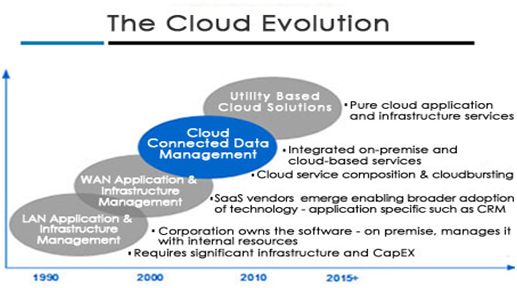
Figure 3: Generation of Cloud
Cloud Characteristics
Cloud computing features, by the National Institute of Standards and Terminology (NIST) are
- Cost Efficiency: No need to deploy capital to purchase physical equipments and maintain them.
- On-demand self-service: Provisioning of computing resources is automatic, as per user’s need, without human interaction.
- Broad network access: Available over network, can be accessed anywhere, anytime and on any device (mobile phones, laptops, and PDAs).
- Resource pooling: Multiple consumers are served using a multi-tenant model by pooling computing resources.
- Device and location freedom – It can be accessed by a web browser regardless of location or device in use.
- Rapid elasticity: Capabilities are elastically provisioned, to quickly scale out or scale in. Unlimited capabilities often appear to customer.
- Measured service: Exhaustive metering capability for each type of service (e.g., storage, processing, bandwidth, etc). Resource usage can be managed, controlled, and reported transparently to the provider and consumer of the service.
- Cloud computing systems typically use REST-based (Representational State Transfer) APIs (Application programming interface), to enable machines to interact with cloud software
Cloud Service Models
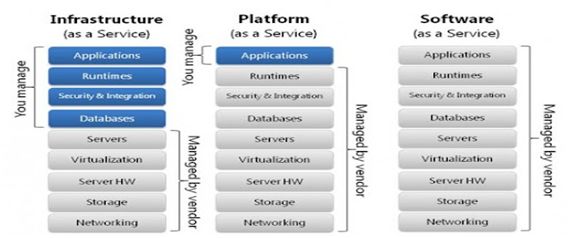
Figure 4: Models of cloud
Various cloud service models are
- Infrastructure as a Service (IaaS)
- Platform as a Service (PaaS)
- Software as a Service (SaaS)
Infrastructure as a Service (IaaS) –
- User accesses the physical hardware and can select as per need – CPU/storage/ etc.
- Resource availability is managed by IaaS cloud providers.
- Examples: Amazon CloudFormation, Rackspace Cloud, Google Compute Engine.
- User installs operating system images with required application software.
- Software patching and maintenance is responsibility of the user.
- Virtual machines (VMs) run as guests by a hypervisor, like Xen or KVM with operating system, middleware, network, storage, data and applications.
- IaaS payment depends upon resources subscribed, time used (per hour), usage of bandwidth (in gigabyte), storage(in gigabyte) or combination of any.
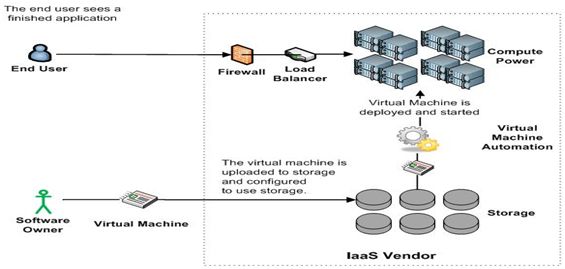
Figure 5: IaaS model
Platform as a Service (PaaS) –
- Complete development platforms with development tool is provided
- Developer builds applications without installing any tools on their computer and then deploy those applications without any specialized systems administration skills.
- The computer and storage resources scale automatically to match application demand in PaaS.
Examples of PaaS include
- App Engine from Google: based on Python and Django
- Force.com from SalesForce: based on the SalesForce SaaS infrastructure and Apex language
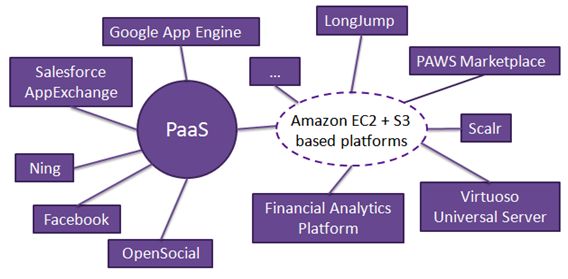
Figure 6: PaaS model
Software as a Service –
- Application software hosted in cloud, catering to user’s need is provided on subscription basis
- Application is accessed via web browser by users.
- Various business applications are provided – collaboration, CRM, ERP, invoicing, HRM, etc
- Reduces IT costs as less hardware and software maintenance costs.
- SaaS applications provide application customization.
- Users not responsible for hardware or software updates
- Example – Google Apps, Dropbox, Salesforce
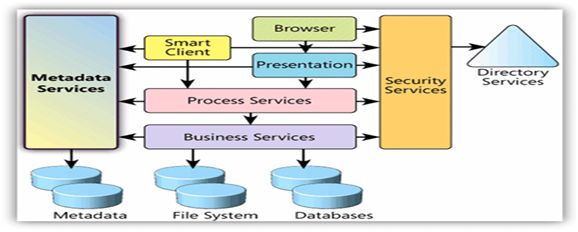
Figure 7: SaaS model
Cloud Types
Various cloud type offerings depending upon level of control, are
The Private Cloud – Complete private control similar to personal data centre setup. It offers private infrastructure as service. Also called “internal cloud computing”. Example – VMware vCloud and Citrix VDI.
The Public Cloud – No control by user. Vendors offer cloud computing services like – Salesforce.com and ADP
The Hybrid Cloud – Itcombines both. Most company evolved from a traditional, private hardware infrastructure to a cloud-based one. For example, Cisco, offers IronPort Email Security as their hybrid solution and Google, known for hosted solution, offers Postini email archiving.
Link for free practice test – https://www.testpreptraining.com/aws-certified-cloud-practitioner-free-practice-test
